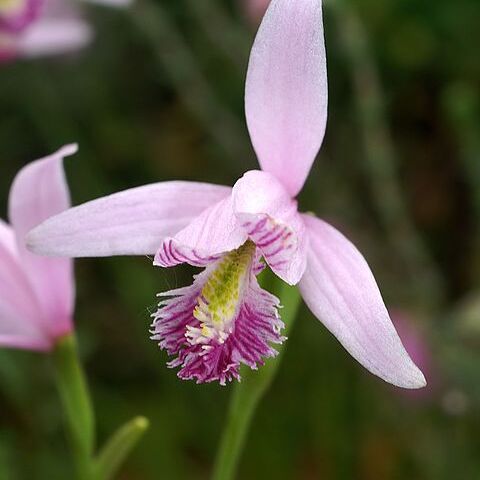Sep and lateral pet separate, spreading, similar in color, the pet somewhat wider and shorter; lip declined, not lobed, narrow below the middle, distally expanded, fringed on the margin and bearded on the face; column projecting forward over the lip, its terminal anther deflexed; pollinia 2; perennial from a short rhizome with a cluster of fibrous roots, the erect stem bearing a single lf near the middle, often a long-petioled basal lf, and a terminal bracteal lf subtending the solitary, short-peduncled fl; fls rarely 2. 2–several, irregularly cosmop.
Herbs, perennial, terrestrial, rather succulent. Roots few, scattered along slender rootstock producing shoots at wide intervals, slender, fibrous. Stems slender, solitary leaves inserted toward middle. Leaves ascending; blade fleshy-leathery. Inflorescences terminal, solitary flower or 2-flowered racemes; floral bracts foliaceous, prominent. Flowers resupinate, showy; lip bearing prominent adaxial fleshy crests divided into distinct cylindric processes, margins laciniate; pollinia 2, viscidia absent; stigma flat. Fruits capsules.
Rhizome or tuber-bearing, leafy or leafless terrestrial herbs. Sepals subequal, free, erect or rarely spreading. Petals similar to the sepals or shorter and broader, usually erect. Lip erect, simple or 3-lobed, sessile or unguiculate, plane or with various lamellate or thickened nerves, spurless. Column elongated, wingless, foot-less; stigma oblong or broader; clinandrium more or less raised, entire or denticu-late; anther subincumbent or apparently erect, substipitate (at least in some species); pollinia 2 masses, granular.

